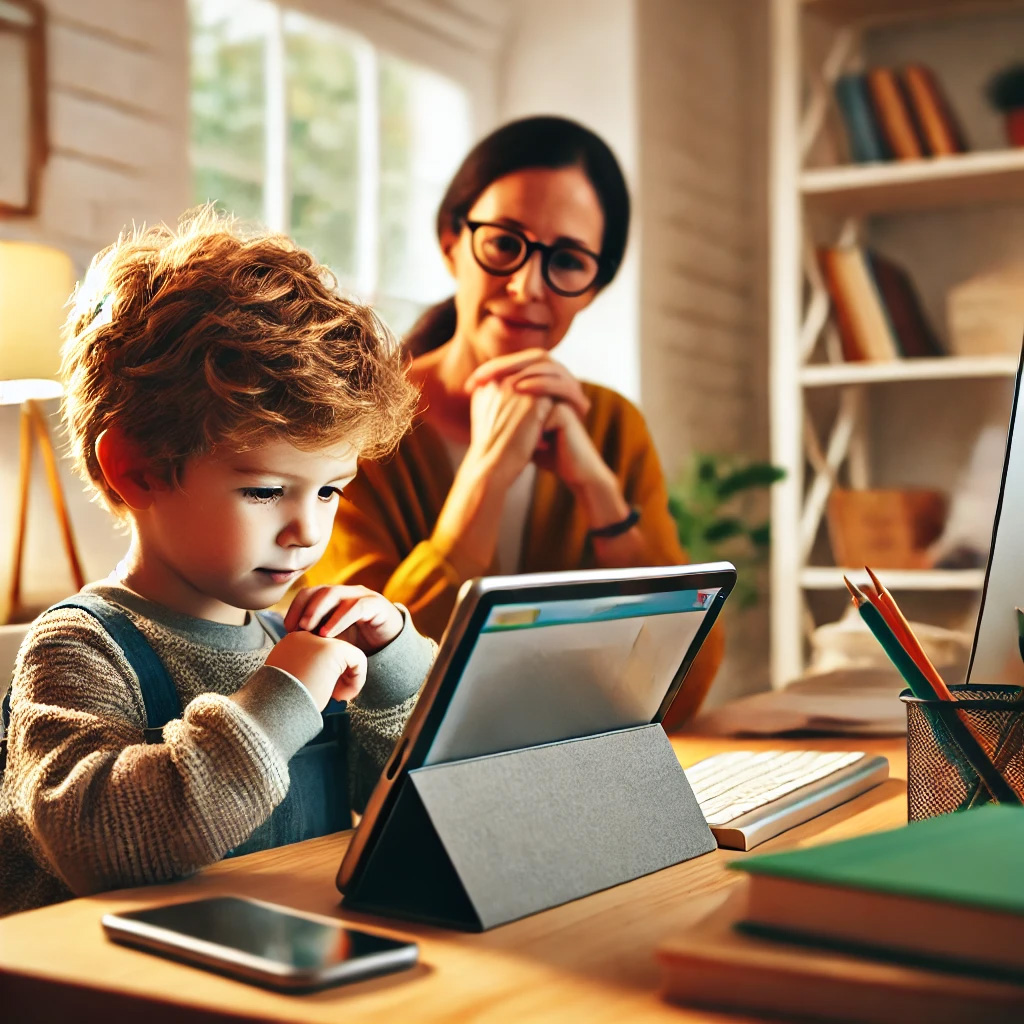Managing Screen Time
How to Find a Healthy Balance for Your Child
Introduction - Managing Screen Time: In today’s digital world, screens are an integral part of children’s lives. From educational content to entertainment, screens can be both beneficial and detrimental depending on their usage. Finding a healthy balance is crucial for maintaining a child’s physical, mental, and emotional well-being. This article will provide practical strategies for parents to manage screen time effectively, without compromising on learning and fun.

Why Managing Screen Time is Important
Excessive screen time has been linked to a variety of issues in children, including poor sleep, decreased physical activity, and behavioral challenges. According to the American Academy of Pediatrics, children aged 6 years and older should have consistent limits on the time they spend using media, ensuring it doesn’t interfere with sleep, physical activity, or other healthy behaviors.
Dr. Jean Twenge, a psychologist and author of iGen, notes that children who spend more time on screens are more likely to experience higher levels of anxiety and depression. Therefore, it’s essential to create a balanced approach that allows for both the benefits of technology and the joys of offline activities.
Practical Tips for Managing Screen Time
1. Establish Clear Rules and Boundaries
Set clear and consistent rules about when and how screens can be used. Create a family media plan that outlines screen-free times, such as during meals, family activities, or an hour before bedtime.
Tip for Parents: Consider using a visual schedule that marks “screen time” and “no screen time” periods. This helps younger children understand the routine and adhere to the rules.

2. Designate Screen-Free Zones at Home
Creating specific areas at home where screens are not allowed helps reduce excessive usage. For example, keep screens out of the bedroom and encourage children to focus on other activities like reading, playing board games, or engaging in art projects.
Activity Idea: Set up a reading corner or an art space with plenty of materials like books, puzzles, and drawing supplies. This gives children alternatives to screens and encourages creative play.
3. Encourage Active Screen Time Over Passive Consumption
Not all screen time is created equal. Encourage children to use screens for activities that promote learning, creativity, or physical movement, such as educational apps, digital drawing tools, or interactive dance games.
Activity Idea: Introduce your child to digital art programs where they can draw and paint, or sign them up for virtual art classes like those offered at Snowlike Studio. This way, they can use screen time to develop their creative skills.
4. Model Healthy Screen Habits
Children often mimic their parents’ behaviors. If they see you constantly on your phone or tablet, they’re likely to do the same. Set an example by being mindful of your own screen time, particularly during family interactions.
Tip for Parents: Try implementing a “digital detox” day for the whole family once a week, where everyone engages in offline activities together, such as hiking, cooking, or visiting a museum.
 5. Use Screen Time as a Reward, Not a Routine
5. Use Screen Time as a Reward, Not a Routine
While screen time shouldn’t be the go-to activity, it can be used as a reward for completing chores, finishing homework, or engaging in outdoor play. This approach helps children see screens as a privilege rather than an automatic right.
Tip for Parents: Set specific goals, like “after 30 minutes of reading, you can have 15 minutes of screen time.” This balances both educational and leisure activities.
6. Provide Engaging Offline Alternatives
To reduce dependence on screens, offer a variety of offline activities that engage your child’s interests. This could include sports, arts and crafts, or even family games.
Activity Idea: Encourage children to participate in creative activities like art classes, which not only keep them away from screens but also help them develop new skills and self-expression.
Linking Screen Management to Our Art and Sports Programs
At Snowlike Studio, we understand the importance of providing children with engaging offline activities that stimulate their minds and bodies.
Our art classes for Kids offer children the chance to explore their creativity in a structured setting, while our skiing and snowboarding lessons promote physical activity and a love for outdoor sports. These activities serve as healthy alternatives to screen time, helping children develop a balanced lifestyle.
Final Thoughts
Managing screen time can be a challenge in today’s technology-driven world, but with the right strategies, parents can create a balanced and healthy environment for their children. By setting clear boundaries, modeling good habits, and providing engaging alternatives, you can help your child make the most of both the digital and real worlds.
At Snowlike Studio, we’re committed to helping families find that balance through our diverse range of art and sports programs. Contact us to learn more about how our classes can support your child’s development in a screen-free environment.
.

